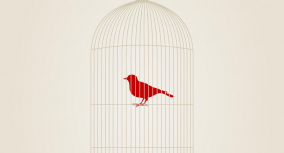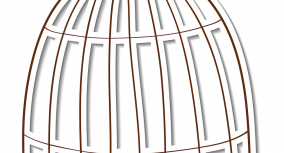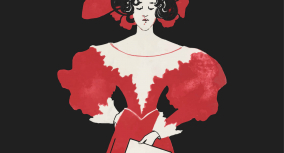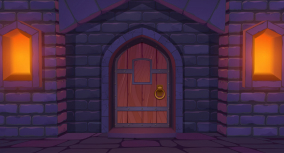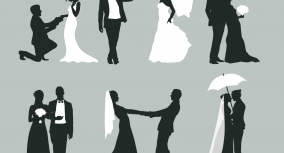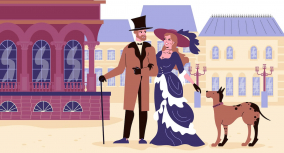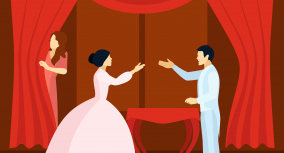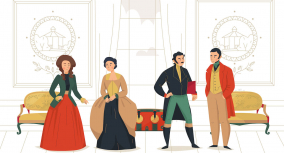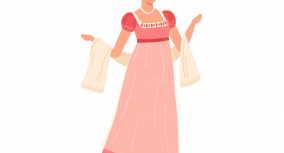With its bold subversion of societal and gender norms, Henrik Ibsen’s 1879 play A Doll’s House remains a timeless classic. One of the main aspects contributing to its success is the author’s masterful use of symbols and literary devices. They add depth to the story and reveal more about the characters’ inner lives.
The main symbols in A Doll’s House are macaroons and Nora’s tarantella dance. Both are directly related to the main character’s rebellious nature. According to research by Alamri and Alkhalagi (2022), both symbols are signs of her cathartic, expressive action, allowing her to show her true self.
This article by the Custom-Writing.org team will analyze these and other aspects of the play. First, we will explore the meaning of the play’s symbols. Next, we will go into detail regarding A Doll’s House setting and genre. Finally, you will learn about the central conflict in the play.
🦄 Symbolism in A Doll’s House
Symbolism plays an essential role in getting a deeper insight into the main ideas of A Doll’s House. Among the most prominent symbols are:
- Macaroons that Nora secretly munches on as a rebellious act against her husband’s wishes.
- A tarantella dance which is a part of the ball. It represents Nora’s passionate, uncontrollable personality.

Macaroons
Macaroons are sweet round cookies that have become so popular all over the world recently. It seems pretty innocent that they appear in some of the scenes of the play. However, macaroons in A Doll’s House play a much more critical role. The sweets are mentioned already in the first scene when Nora comes back from shopping. She eats them while alone and hides them in the pockets as soon as her husband walks in. It appears that Torvald forbids her to eat sweets.
Hasn’t Miss Sweet Tooth been breaking rules in town today?.. Hasn’t she paid a visit to the confectioner’s?.. Not even taken a bite at a macaroon or two?
A Doll’s House, Torvald Helmer, Act I
Even though the woman swears that she would never go against her husband’s will, the audience sees her eating macaroons and even requesting them later for dinner. She even lies to Dr. Rank that it was Mrs. Linde who brought them. As a symbol in A Doll’s House, macaroons show her real nature. Nora only pretends to be an obedient wife when deep inside, rebellious actions are what attracts her. She is forced to hide from everyone to keep her marriage intact.
Tarantella Dance
The tarantella dance in A Doll’s House appears to be an essential part of the couple’s life. It is something they brought from their trip to Italy and may be seen as a romantic spark. They have decided to incorporate the dance into the upcoming ball. In the play, Nora uses the wish to practice it as an excuse to keep Torvald from checking the mailbox. However, there is another side to this symbol. The tarantella represents Nora’s uncontrollable character. It is a passionate, emotional, and fiery dance, so she can finally stop pretending and enjoy the element while dancing. It comes from the fact that Victorian women were not welcome to be so open with their emotions.
My dear darling Nora, you are dancing as if your life depended on it.
A Doll’s House, Torvald Helmer, Act II
Moreover, Nora likes to please her husband, and Torvald enjoys it. However, it appears that he only finds it acceptable when his wife dances under his control and when everyone else approves the dance. It points out his controlling and self-conscious nature once again.
🏠 A Doll’s House Setting
The setting of A Doll’s House is a small town or city somewhere in Norway. It is Ibsen’s native country, even though the play was written in Germany. However, most of the action appears to be happening in the living room of the Helmer family. It is described as a place where a respectable middle-class gentleman would live.
Choosing such a general setting is not a coincidence. Ibsen did it on purpose so that the audience in any country would identify the setting with their own perception. It may have been a trick to draw more attention to spiritual and existential issues opened up in the play.
A Doll’s House Time Period
Unlike the place where the play is set, the time period of A Doll’s House can hardly be taken as familiar nowadays. Ibsen describes the Victorian era, which was a tough time for all women. Their rights were widely repressed, leaving the window of opportunities almost shut. The only thing women could do is get married, obey their husbands, and raise kids. On the other hand, men could aim for any goal they wished in their career and life in general. Husbands were managing all financial issues in the family and wanted nothing to deal with their children. Therefore, Ibsen’s play presenting the rebellious behavior of female characters was so scandalous back then.
🖋️ Literary Devices in A Doll’s House
Some of the literary devices in A Doll’s House are pretty typical for the genre. Therefore, there is no point in highlighting them separately.
However, Ibsen’s two tricks fit perfectly in the overall impression of the play being revolutionary and shocking:
- Not every audience would understand irony, so the author had to present it smoothly. In the explanation below, you can find out more about it and check out the examples of its use.
- Another device masterfully implemented in the play is foreshadowing. Some moments when it is present in A Doll’s House may even be considered ironic as well.
Irony
One of the first examples of irony mentioned in the play is when Torvald calls his wife a spendthrift. It might look like it’s true for someone who doesn’t know the story. However, as the audience finds out later, Nora puts away all her allowance because she needs to pay off the loan. She borrowed the money illegally to pay for Torvald’s treatment and save his life. Since, as a woman, Nora only gets financial support from her husband, she has to sacrifice some things and spend money carefully.
An example of dramatic irony in A Doll’s House is when Torvald promises to support and protect Nora whatever happens. He wishes there can be a situation in which he could prove it. However, when such time comes at the end of the play, Torvald’s words appear to have been an empty promise. Krogstad reveals Nora’s secret and blackmails the family. The woman expects her husband to stand up for her and give up social rules. Meanwhile, Torvald doesn’t care about his wife and only worries about his reputation and position.
Now you have destroyed all my happiness. You have ruined all my future.
A Doll’s House, Torvald Helmer, Act III
Foreshadowing
Perhaps the most prominent case of A Doll’s House foreshadowing, which also serves as a symbol, is Nora having macaroons. She is not allowed to buy anything from a candy shop. Still, she greatly enjoys some sweets in the first scene. Already then, the audience perceives it as a hint. Nora’s nature is rebellious, and she is pretty disobedient, only trying to look like an innocent good wife. Therefore, this act foreshadows her realization of Torvald’s repression, which also leads to her decision to abandon the family.
One more example of this literary device is used in the conversation between Nora and the maid. They are talking about the maid’s past and how she was forced to leave her child. Nora, still tense after talking to Krogstad, exclaims that if anything happens with her, the maid can be a great substitute in the role of mother for her three children.
And if my little ones had no other mother, I am sure you would—What nonsense I am talking!
A Doll’s House, Nora Helmer, Act II
The whole situation with the secret debt gets Nora into thinking about either killing herself or escaping the shame. However, it is merely a foreshadowing of her actually leaving by the end of the play. Only the reason for such a decision is different.
📒 A Doll’s House Genre
Since A Doll’s House is a play, its genre would be identified as drama. It wouldn’t be so easy to fully feel and understand the piece until it is realized on the stage.
However, we can also claim that the A Doll’s House genre is a tragedy.
Ibsen took an exciting path to create the play since it came out slightly different from the previous tragedies. In this one, he highlights the clash between an individual and society. Therefore, even though there is no death at the end of the play, the audience witnesses the end of a marriage and the “death” of Nora’s previous identity.
⚔️ A Doll’s House Conflict
As mentioned in the previous section, there is a significant clash in the play. A Doll’s House conflict is represented by Nora’s attempts to fight the social rules. Therefore, it can be argued that the central conflict revolves around an individual going against society. Nora stands for the rights of all women who are repressed and unable to function as separate members of the community without their husbands. Moreover, her most obvious conflict is with her husband, Torvald, who doesn’t treat her as equal. She is not satisfied with being his obedient doll anymore, and she realizes that the institute of marriage itself must be faulty.
I have been your doll-wife, just as at home I was papa’s doll-child; and here the children have been my dolls… That is what our marriage has been, Torvald.
A Doll’s House, Nora Helmer, Act III
Thank you for reading this article! If you need help with formulating a thesis for your paper on A Doll’s House try our thesis statement generator. If you are looking for an essay idea on the play, you might want to take a look at the essay topics collection. Any questions left? Check the QA section!
🔗 References
- A Doll’s House Tarantella: the Power of Transformation: ResearchGate
- What is Symbolism in Literature? – Definition, Types & Examples
- Genre Definition and Examples in Literature – ThoughtCo
- 45+ Literary Devices and Terms Every Writer Should Know
- ‘A Doll’s House’: Themes and Symbols – ThoughtCo
- A Doll’s House – Context
